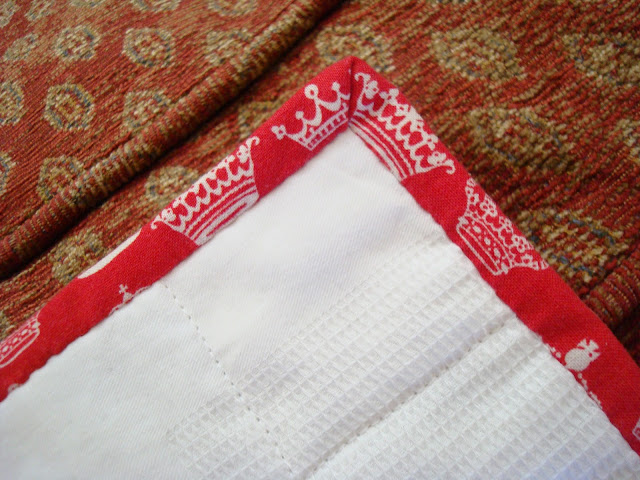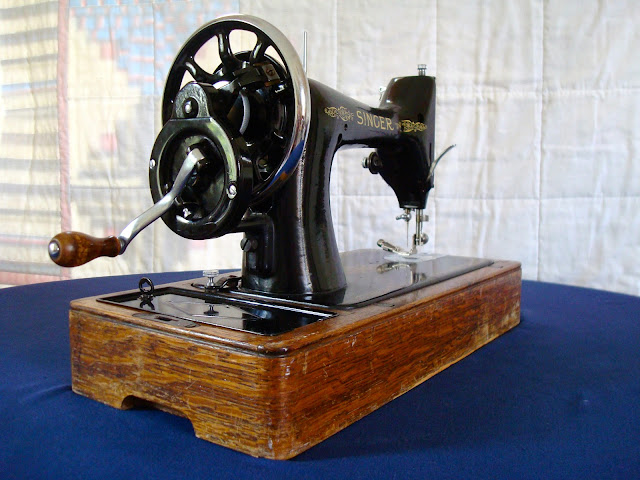Here is the needle of the Singer 401G set up with the general purposes presser foot and throat plate. This is how the machine was when it arrived and how it normally lives. There are easy changes I can make to the machine to improve its quilting performance.
The changes revolve around this little lot.
- No1 a walking foot
- No2 a straight stitch throat plate
The general purposes throat plate is pictured on the left for comparison. Apparently the smaller needle hole helps stitch formation by offering more support to the fabric. The benefit of the walking foot is that it helps reduce "shift".

This robust looking lever is the means by which the throat plate can be lifted to carry out darning (notice the symbol that looks like a darn), embroidery and free motion work. Move the lever to the far left to remove the throat plate either for cleaning (notice the cute brush symbol) or to swap the plates.

Here is the machine with the plate swapped, the walking foot fitted and the stitch length adjusted to ten stitches per inch (just like the books told me to do).
Next I made a trial sandwich using off cuts of the batting, backing and quilt top. No point using materials that aren't similar to those in the finished project. I played around sewing lines of quilting. I found that the bobbin thread was only slightly visible first time so I reduced the upper tension half a number and tried again. It took a few goes until the bobbin thread vanished somewhere inside the work. That should do it.
Now I like quilting on the 401G with all this kit but remember - my first quilting project was pieced and quilted on a diminutive 1899 Singer 25K hand crank. What is more that quilt, although it may never win first place and the Minnesota State Fair, actually looks ok and has been keeping me warm at nights since November 2012. My point? Don't let the gadgets put you off. Think carefully, take your time, have a go!





























